The Dark Knot carries an extensive range of hand made silk ties, pocket squares & lapel flowers. In addition to providing products of the highest quality, our core philosophy is geared towards helping gentlemen dress better. Hence, each of our accessories comes presented in an elegant black gift box along with a card recommending matching attire.
It’s a rite of passage for every gentleman. Once we graduate from the school of hard knocks (i.e college or high school), it’s imperative that we make our first neckwear purchase.
Nothing defines a gentleman like a well tied tie. And that too, with a quality necktie.
But with thousands of options to choose from, how does one go about discerning the quality of a prospective necktie purchase? There are two fundamental factors that contribute towards a high-quality, luxurious necktie: Fabric and Construction. Below we will highlight what to look for in fabric and construction (visually) and then how to test the tie to see how well it stacks up against these parameters.
So here we go – HOW TO ASSESS THE QUALITY OF A TIE:
Fabric
Silk is the top choice of fabric for luxury neckwear manufacturers for the following reasons:
- Silk is one of the most durable fabrics in the world. Despite silk being soft, its tensile strength is very high. Its elasticity contributes significantly to its tensile strength.
- Silk fabrics retain their shape and have a moderate resistance to wrinkling
- Silk fabrics drape excellently.
- Silk does not attract dirt because of its smooth finish.
Construction
A well constructed tie will have the following pieces in place:
Woolen Interlining – Luxury necktie manufacturers generally use wool to interline (material in between the fabric that gives a tie its shape and body) their ties, versus lower quality manufacturers that use synthetic material such as polyester.
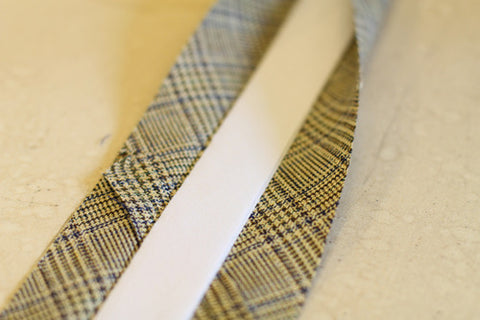
Slip stitch – Quality manufacturers will use a slip stitch, which is the thread running down the tie vertically on the underside of the fabric. This slip stitch affords flexibility of the material shifting as you are tying and untying the tie.

Bar Tack – Most quality ties will have a stitch joining the two sides on the back of the wide end, at the top of the tipping where the two sides join and make an inverted ‘V’. A bar tack stitch keeps the two sides of the tie firmly in place.
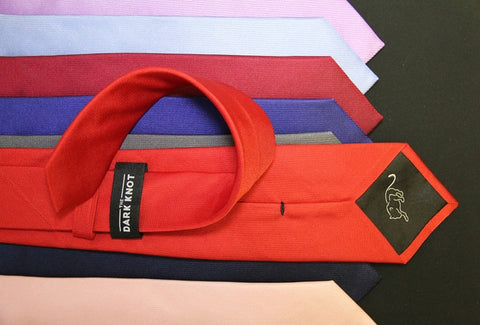
Keeper – The keeper is the loop behind the wide end that the narrow end of the tie is slipped through to keep it in place. The keeper may be self fabric or a label. Look for substantial stitching to ensure durability. Sub par ties will often have keepers or label loops not stitched on properly and become subject to wear and tear and eventually falling off.
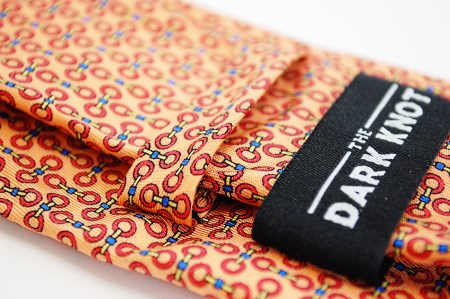
The Dark Knot's Ashby Rings Coral Silk Tie. Image courtesy of www.realmenrealstyle.com
Shell – The outer shell or body of a well made tie should consist of three pieces: a large end (blade), a small end (tail) and a neck piece (gusset) which joins the two ends.
Tipping – Quality tie markers will tip their ties (underside of the tie) with silk, yielding an even more elegant feel and touch for the tie. Sub bar tie makers often use polyester interlining, even if they say the ties are 100% silk.
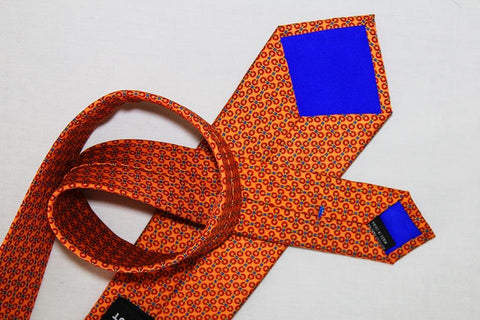
Cut on the Bias – A well constructed tie is made of fabric that has been cut on the bias (i.e at a 45 degree angle). Cutting fabric on the bias means that it has been cut diagonally across the grain of fabric, allowing the tie to assume its original shape after knotting. A bias cut also allows a finished tie to lie flat and resist turning over to one side.
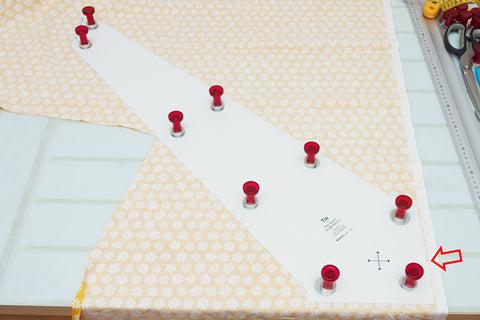
In order to test the above parameters, there are two tests one should conduct to ensure that the ties are of high quality:
- Lay the tie on a flat surface, put one palm over the widest part and the other about where the knot will be, and move your palms apart. The tie should stretch slightly and go back to its original shape when you let go.
- Hold the tie up by its small end, or hang it over your arm. If it twists, it wasn’t cut on the bias.
We would like to mention that our ties at The Dark Knot have all been subject to the stringent quality tests above in order to ensure ties of the highest quality. View this comprehensive video below by Antonio Centeno at Real Men Real Style that outlines essential elements to look for in a high quality necktie:
Thanks for tuning in! Still unsure where to start? Try browsing our selection of starter kits.

